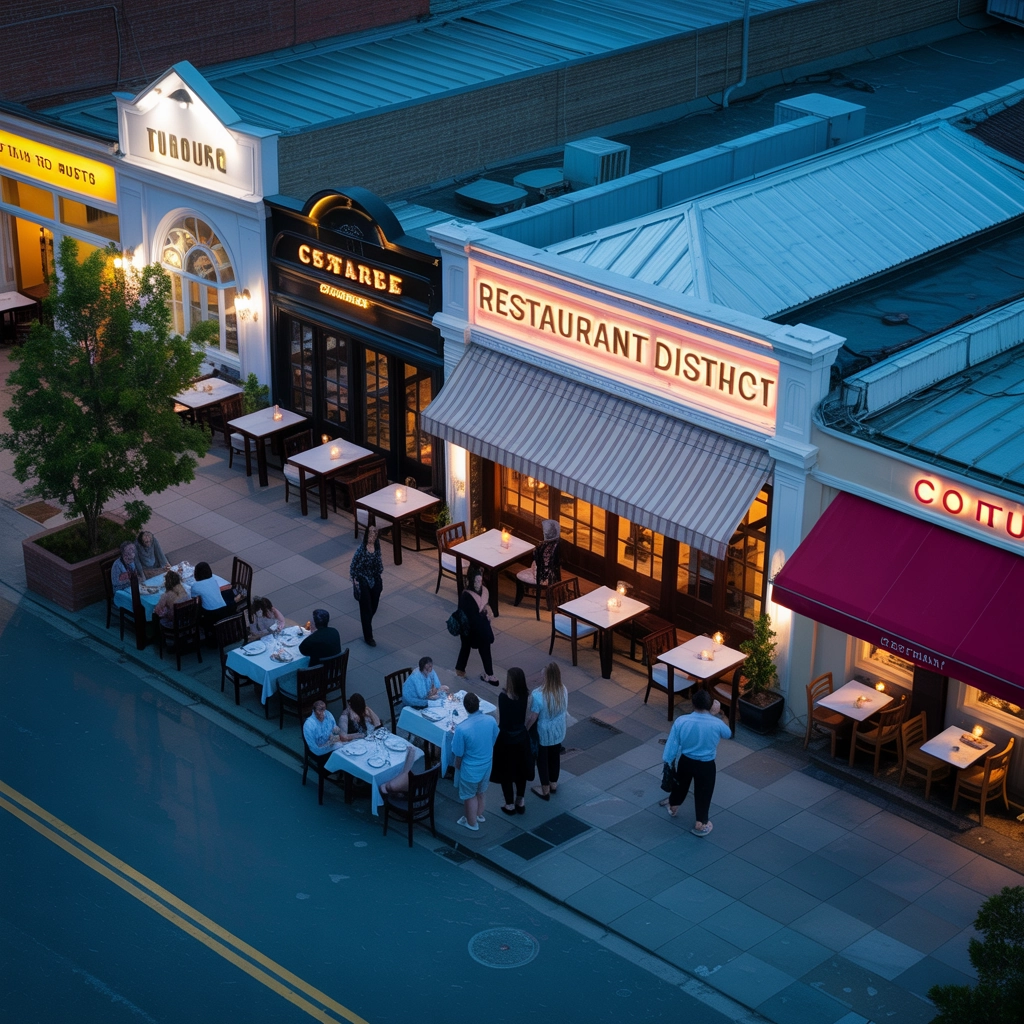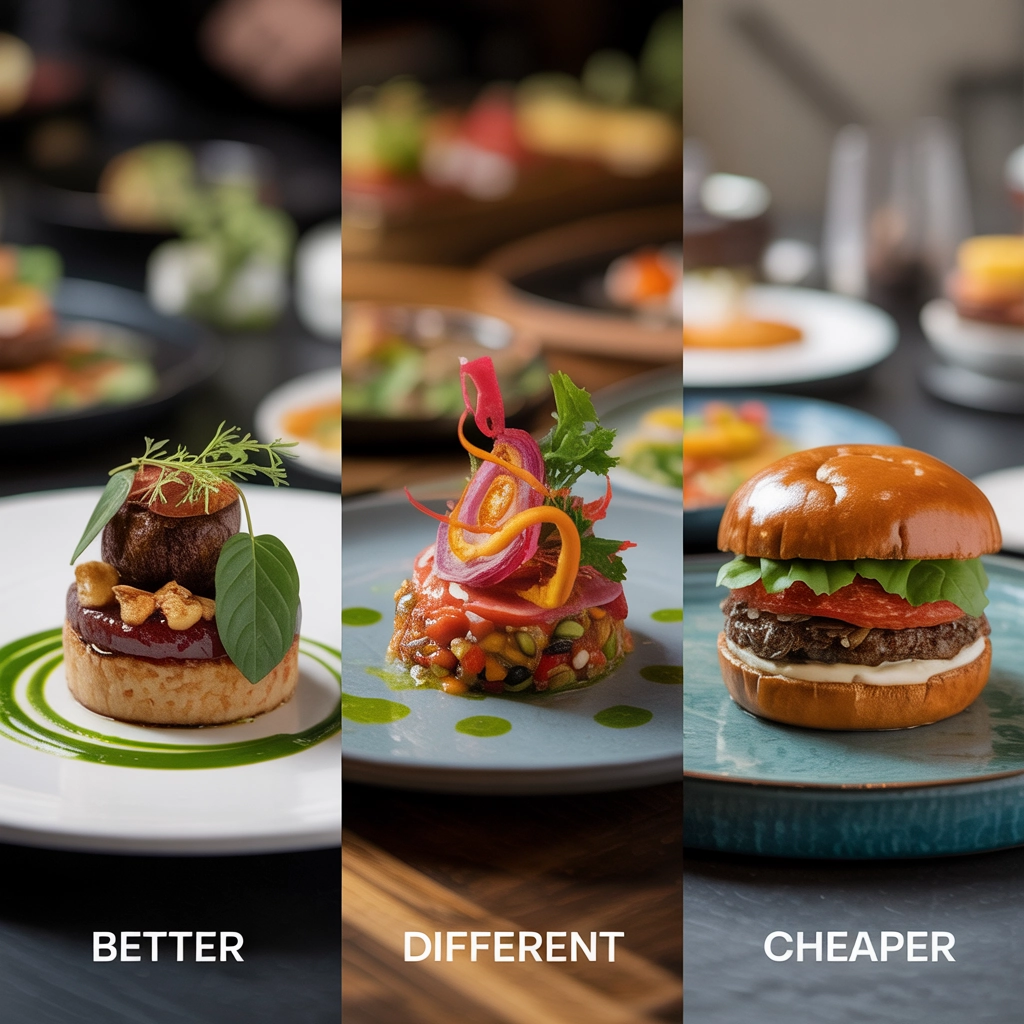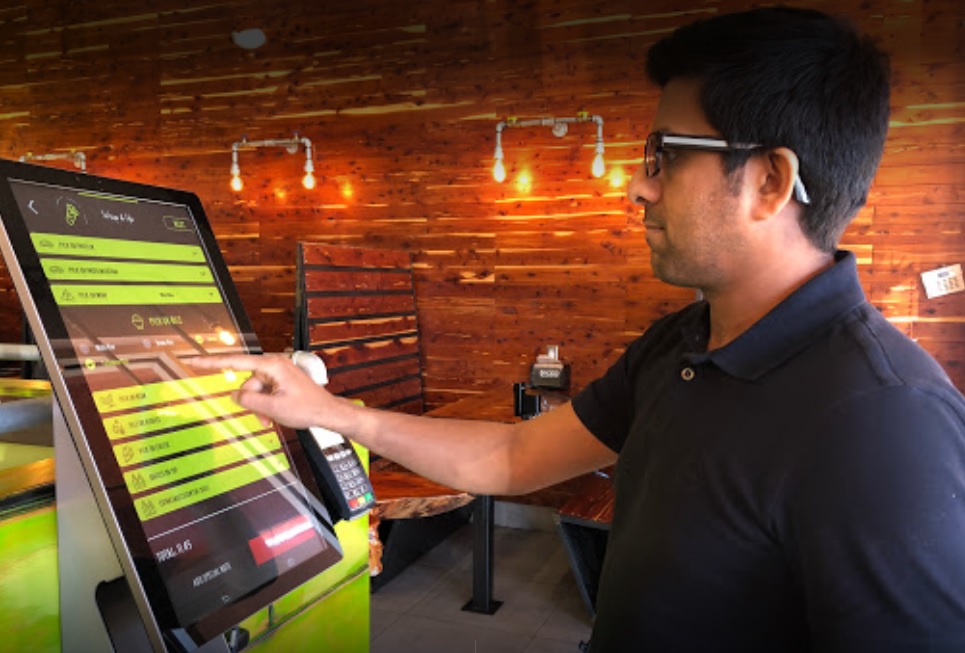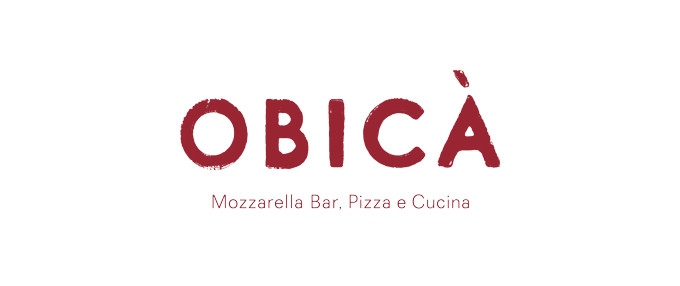In the restaurant industry, where approximately 60% of new establishments close within their first year, simply having a passion for food isn’t enough. The million-dollar question every aspiring restaurateur must answer is straightforward yet profound: What makes your restaurant concept different from the thousands of others opening this year?
When I mentor new restaurant owners, I always start with this critical question. Your answer determines whether you’re building on solid ground or shifting sand. Let’s explore how to identify, develop, and leverage your competitive edge in the crowded restaurant marketplace.
Understanding Your True Competitive Advantage
Your competitive advantage isn’t just what you think makes your restaurant special—it’s what your target customers believe makes you irreplaceable in their lives. This distinction is crucial.
Consider these fundamental questions from my book, “Guide to Restaurant Success”:
- Is your family in the restaurant business?
- Do you have a restaurant background?
- Are you in possession of award-winning recipes?
- Are you trained as a chef or sommelier?
- Do you own the real estate (building, land, space)?
Each “yes” represents a potential competitive edge—but only if you leverage it correctly. For example, having restaurant-owning parents might give you insider knowledge and connections, but if you don’t apply their lessons, this advantage remains theoretical.

The Three Pillars of Competitive Advantage in Restaurants
After decades in the food and beverage industry, I’ve identified three primary ways restaurants establish meaningful competitive advantages:
1. Proprietary Knowledge and Skills
This includes:
- Family recipes that can’t be duplicated
- Specialized culinary techniques
- Unique flavor combinations
- Service methods that competitors haven’t mastered
Chef Michael Freeman, recently named Culinary Director at Paso Robles, built his reputation on distinctive preparations of local ingredients that competitors couldn’t easily replicate. His knowledge of regional farming practices and relationships with specialty producers became his competitive edge.
2. Operational Excellence
Some restaurants win not through unique dishes but through exceptional execution:
- Consistency that customers can trust
- Speed of service that fits modern lifestyles
- Cost management allowing for better value
- Staff training that elevates every interaction
Taylor Farms’ new corporate headquarters exemplifies how operational excellence starts at the foundation of food businesses. Their investment in cutting-edge facilities enables them to maintain quality standards that translate directly to customer experience and cost advantages.
3. Market Position and Differentiation
This covers:
- Location advantages (waterfront, downtown access, etc.)
- Underserved cuisine categories in your area
- Demographic alignment with your concept
- Community connections and local relevance
The Delta Hotels Virginia Beach Bayfront Suites understood this principle perfectly. By positioning as “the first property on the Chesapeake Bay with its own private beach,” they instantly created a competitive advantage that other local hotels simply cannot match, regardless of their menu or service.
Identifying the Gaps in Your Market
Your competitive edge often exists in the white space—what’s missing in your local market that customers want. This requires honest demographic analysis and competitive research.
Ask yourself:
- Does the community where your restaurant will be located need and/or desire this establishment or cuisine?
- What are the demographics, and do they align with your concept?
- Can you handle the competition? Can the competition handle you?
I’ve seen restaurants fail despite excellent food because they ignored these questions. One client insisted on opening an upscale French bistro in a neighborhood dominated by young families seeking affordable dining options. Despite impeccable execution, they struggled from day one because they solved a problem nobody had.
Conversely, another client recognized that their town lacked healthy grab-and-go breakfast options for working professionals. Despite having less culinary training than competitors, they thrived by filling this specific gap.

The “Better, Different, Cheaper” Framework
Every successful restaurant must excel in at least one of these categories:
Better
This means superior quality, taste, ingredients, or experience compared to competitors. Six Senses Hotels Resorts Spas built their reputation on being demonstrably better in their approach to hospitality, emphasizing wellness and sustainability in ways competitors weren’t. Their expansion demonstrates how being genuinely better creates sustainable growth opportunities.
Different
Offering something competitors don’t or can’t. The “flavor mashups” trend reshaping restaurant menus in 2025 shows how differentiation can become a powerful competitive advantage. By creating unexpected combinations that surprise and delight customers, restaurants can stand out even in saturated markets.
Cheaper
Providing comparable value at a lower price point. This doesn’t mean low quality—it means operational efficiency that allows you to pass savings to customers. The increasing use of frozen foods by profitable operators demonstrates how smart sourcing can create price advantages without sacrificing quality.
Most struggling restaurants fail to clearly define where they excel in this framework. They’re not significantly better, noticeably different, or meaningfully cheaper than alternatives. This middle ground is restaurant purgatory.
Articulating Your Competitive Edge
Once you’ve identified your advantages, you must articulate them clearly. This becomes your North Star for decision-making and marketing.
Your competitive edge statement should:
- Be specific and measurable
- Focus on customer benefits, not features
- Be defensible against competitors
- Resonate with your target audience
For example:
- Weak: “We serve authentic Italian food.”
- Strong: “We’re the only restaurant in Denver serving coal-fired pizza made with 00 flour imported weekly from Naples, using techniques certified by the Associazione Verace Pizza Napoletana.”
The difference is specificity and defensibility. Many restaurants can claim authenticity, but few can support it with verifiable distinctions.

Sustaining Your Competitive Edge
The restaurant industry evolves constantly. Today’s innovative concept is tomorrow’s old news. Your competitive edge requires continuous reinvention.
Consider how flavor trends are constantly reshaping food and beverage. From black lime to chamomile, staying ahead of emerging tastes can maintain your competitive advantage. Restaurants that monitor these shifts position themselves to capitalize on consumer interest before competitors.
Technology offers another avenue for maintaining competitive advantages. Innovations in demand forecasting through AI and machine learning are revolutionizing inventory management, helping restaurants reduce waste while ensuring availability. Early adopters gain efficiency advantages that directly impact profitability.
Your Turn: Identify Your Competitive Edge
If you’re planning to open a restaurant, take time now to honestly assess your competitive advantages:
- List your personal and professional assets that could translate into restaurant advantages (culinary training, industry connections, property ownership, etc.)
- Research your local market to identify gaps and opportunities others have missed
- Evaluate existing competitors to understand their strengths and weaknesses
- Define where you’ll excel in the Better-Different-Cheaper framework
- Craft a clear competitive edge statement that will guide your concept development and marketing
Remember, a restaurant without a clear competitive edge is simply a gamble. With a well-defined advantage, you transform that gamble into a calculated risk with significantly better odds of success.
The Brutal Truth
In closing, let me offer some tough love: If you can’t clearly articulate what makes your restaurant concept competitively advantaged, you’re not ready to open. Full stop.
The good news? You don’t need to be a celebrity chef or have millions in backing to create a competitive edge. You simply need clarity about what makes your concept valuable to a specific group of customers in ways that competitors can’t easily duplicate.
Take the time to develop this clarity now, before you’ve signed leases or purchased equipment. Your future self—and bank account—will thank you.
Written by Michael Politz, Author of Guide to Restaurant Success: The Proven Process for Starting Any Restaurant Business From Scratch to Success (ISBN: 978-1-119-66896-1), Founder of Food & Beverage Magazine, the leading online magazine and resource in the industry. Designer of the Bluetooth logo and recognized in Entrepreneur Magazine’s “Top 40 Under 40” for founding American Wholesale Floral. Politz is also the founder of the Proof Awards and the CPG Awards and a partner in numerous consumer brands across the food and beverage sector.







